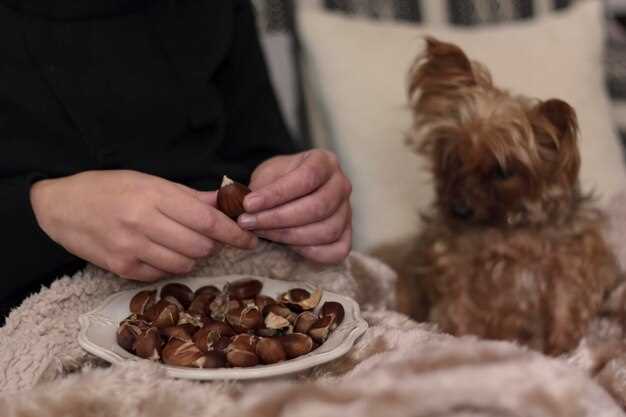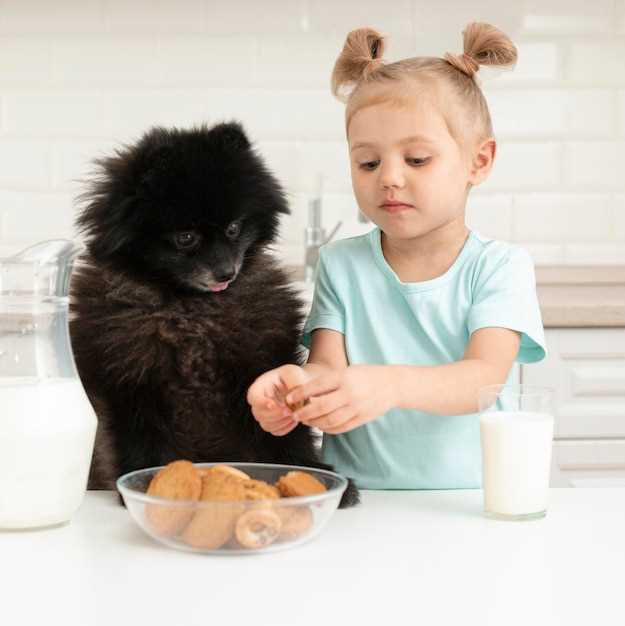If you’re seeking the healthiest homemade treats that will make your puppy wag its tail in joy, try using ingredients such as oats, pumpkin, and peanut butter. These not only ensure your pet’s delight but also bolster their well-being. Oats provide a great source of fiber, promoting healthy digestion. Pumpkin packs vitamins and minerals while adding a naturally sweet flavor. Peanut butter, when unsweetened and free from xylitol, delivers healthy fats and proteins, making it an excellent base for treats.
As you embark on crafting these delightful snacks, consider simple combinations that maximize nutrient intake. Mixing mashed sweet potatoes with oat flour creates a dough rich in antioxidants and vitamin A, essential for visual health and immune support. Personalize flavors by adding a touch of cinnamon or turmeric, both offering anti-inflammatory benefits while enriching the aroma, to ensure your furry companion can’t resist the smell.
When considering meat-based treats, choose lean proteins like chicken or turkey, which provide essential amino acids for muscle growth and repair. Baking small pieces at low heat intensifies the flavors without depleting the nutrients, making them a high-value reward during training sessions. Freeze-dried liver is an alternative to consider, delivering intense flavor and vital nutrients in a crunchy form.
Consult with a veterinarian before introducing new ingredients, assessing for possible allergies or sensitivities unique to your puppy. With careful selection and preparation, you can create an array of delectable and nutritionally balanced treats that bring joy and health benefits to your beloved pet.
Understanding Nutritional Needs for Puppies

Include a variety of nutrients to support your puppy’s growth and development. Prioritize high-quality protein, such as chicken or turkey, to aid in muscle development and repair. Balance is key; ensure you incorporate healthy fats, like fish oil or flaxseed oil, to support skin and coat health.
- Protein: Aim for a diet containing at least 22-30% protein to support rapid growth.
- Fats: Provide 8-20% fat for energy and the absorption of fat-soluble vitamins.
- Calcium and Phosphorus: Maintain a balanced ratio (about 1.2:1) for bone health to prevent growth-related issues.
- Vitamins and Minerals: Ensure adequate intake of vitamins A, D, and E, as well as minerals like iron and zinc to support overall health.
Hydration is equally important. Puppies should always have access to fresh, clean water to maintain their active metabolism. Monitor their intakes, especially during warmer weather or after vigorous play.
Selecting the right food also involves steering clear of harmful ingredients. Avoid artificial preservatives, colors, and flavors that might upset their stomachs or lead to allergies. Instead, focus on wholesome, natural ingredients.
Transitioning between different foods should be gradual to prevent digestive issues. Mix increasing proportions of the new food with the old over a week. Observe any reactions and adjust accordingly. Consulting with a veterinarian ensures nutritional plans meet specific needs.
Key Nutrients Required for Puppy Growth
Ensure your puppy gets a balanced diet rich in protein, as it is essential for muscle development and tissue repair. Animal sources such as chicken, turkey, and fish provide high-quality protein that puppies can easily digest. For optimal bone development, calcium and phosphorus are necessary. Include ingredients like eggshell powder or ground bone meal in homemade treats to meet these mineral needs.
Fats are another important nutrient, offering energy and aiding in the absorption of fat-soluble vitamins. Incorporate sources like fish oil or flaxseed oil, which are rich in omega-3 fatty acids that support brain development and maintain a healthy coat. Moderation is vital, as excessive fat can lead to digestive issues or weight gain.
Carbohydrates provide energy and support healthy digestion when included as whole grains, like brown rice and oats, or vegetables like sweet potatoes and carrots. These ingredients are also a good source of fiber, aiding in digestive health and promoting a feeling of fullness.
Don’t overlook vitamins and trace minerals, which play significant roles in growth and immune function. Ingredients like pumpkin and spinach are rich in vitamins A and E, while zinc and iron from red meat support a robust immune system and overall vitality.
Common Ingredients to Avoid in Treats
Chocolate should never be included in dog treats as it contains theobromine, which is toxic to dogs. Even small amounts can cause vomiting, diarrhea, or worse, seizures and heart issues. Always double-check labels or raw ingredients for any cocoa content.
Grapes and raisins are harmful to dogs and can lead to acute kidney failure. Avoid using them entirely in any homemade recipes. Dogs’ sensitivity to these fruits varies, but the risks are severe enough to rule them out completely.
Xylitol, a common sugar substitute in human foods, is extremely dangerous for dogs, causing a rapid insulin release and potentially leading to hypoglycemia. Symptoms can appear rapidly, so ensure any nut butter or sweetener used is free from this ingredient.
Garlic and onions, raw or cooked, can damage a dog’s red blood cells, leading to anemia. These ingredients are often found in seasoned or processed foods, so it’s essential to be vigilant if using store-bought broths or savory snacks as part of a recipe.
Caffeine is another substance that should be strictly avoided. It stimulates the central nervous and cardiac systems and can lead to hyperactivity, restlessness, or more severe problems. Double-check teas, coffee products, and supplements for caffeine content before inclusion.
Ensure homemade dog treats are free from pits and seeds, like those from cherries, apples, and peaches, as they contain cyanide, which is toxic to dogs. Although the fruit itself may be safe in moderation, it’s critical to remove all pits and seeds.
Consulting Veterinarians for Dietary Advice
Seek personalized guidance from your veterinarian to ensure your puppy’s treats meet their specific health needs. Veterinarians provide insights into suitable ingredient choices based on your pup’s breed, age, weight, and existing health concerns.
- Check for Allergies: Discuss potential allergens common in dogs, such as grains or certain proteins, to prevent adverse reactions.
- Balance Nutrition: Your vet can recommend nutrient-rich components, ensuring treats complement your puppy’s main diet without excessive calories.
- Understand Portion Sizes: Obtain advice on appropriate treat sizes and daily limits to avoid overfeeding, which can lead to obesity.
- Choose Ingredients Wisely: Get recommendations for safe ingredients and those to avoid, like chocolate or grapes, which are toxic to dogs.
- Follow Tailored Plans: If your dog requires a specific diet, such as low-fat or hypoallergenic, your vet can help create a list of approved treat recipes.
Regular communication with your veterinarian ensures your homemade puppy treats contribute positively to their overall health without compromising their dietary restrictions.
Balancing Treats with Regular Diet
Limit treat intake to 10% of your puppy’s daily caloric needs. This ensures that your puppy maintains a balanced diet and receives all necessary nutrients from their regular food.
- Assess current diet: Verify your puppy’s diet is complete; discussing this with a veterinarian can help identify any nutritional gaps. This ensures treats remain a supplement, not a substitute.
- Choose nutrient-rich treats: Opt for treats with added benefits, like vitamins or omega fatty acids, enhancing your puppy’s overall health without excessive calories.
- Consider size and frequency: Break larger treats into smaller pieces and spread them throughout the day, preventing overfeeding and keeping your puppy motivated.
- Tailor treats to activity level: Puppies with higher energy levels may need a few more treats, while those less active require fewer to avoid unwanted weight gain.
- Monitor weight and adjust: Regularly check your puppy’s weight and adjust treat portions accordingly. Seek advice if you notice unexpected weight fluctuations.
Incorporating these practices helps treat time remain a rewarding experience without compromising nutritional well-being. Understanding your puppy’s dietary needs creates a healthy balance between indulgence and nutrition.
Recipes for Healthy Homemade Puppy Treats

Veterinarians suggest using ingredients that support a puppy’s growth and health. Start with an easy and nutritious recipe: Banana Oat Bites. Mash 1 ripe banana in a bowl, mix in 1 cup of rolled oats, and add 1/4 cup of unsweetened applesauce. Blend until well combined. Preheat the oven to 350°F (175°C) and line a baking sheet with parchment paper. Drop spoonfuls of the mixture onto the sheet, flatten slightly, and bake for 15-20 minutes until golden and firm. Let them cool before serving.
For a protein-rich option, try Chicken Sweet Potato Treats. Cook 1/2 pound of ground chicken and mix it with 1 cup of cooked, mashed sweet potato and 1/2 cup of oat flour. Form small balls and place them on a lined baking sheet. Bake at 350°F (175°C) for 20-25 minutes. Ensure they are cooled before offering them to your puppy.
Pumpkin Peanut Butter Delights are perfect for pups that enjoy a bit of sweetness. Blend together 1/2 cup of canned pumpkin, 2 tablespoons of natural peanut butter, and 2 cups of whole wheat flour. Roll the dough to 1/4 inch thickness and cut it into fun shapes. Bake at 350°F (175°C) for 30 minutes, then cool completely before serving.
Always confirm that each ingredient is suitable for your individual pet, especially if dietary concerns or allergies are present. Homemade treats can be a delightful supplement to a balanced diet when given in moderation. Consult your vet for personalized advice if needed.
Simple Recipes Using Natural Ingredients
Begin with oats and bananas for a wholesome puppy treat. Mash 2 ripe bananas and mix them with 1½ cups of oats. Form small balls and flatten them into patties. Bake at 350°F for 10-12 minutes. Ensure they cool before serving to your furry friend.
Another safe option involves sweet potatoes. Peel and slice them into thin pieces. Place on a baking sheet and bake at 250°F for about 3 hours. This slow dehydration process turns sweet potatoes into a chewy snack that puppies love.
For a protein boost, consider chicken and apple treats. Combine 1 cup of grilled, shredded chicken with ½ cup of unsweetened apple sauce. Spread the mixture evenly on a baking tray and bake at 350°F for 15-20 minutes. Cut into small squares after cooling completely.
| Ingredient | Quantity | Recipe Type |
|---|---|---|
| Bananas | 2 ripe | Oat Banana Snacks |
| Oats | 1½ cups | Oat Banana Snacks |
| Sweet Potatoes | 2 medium | Sweet Potato Chews |
| Chicken | 1 cup shredded | Chicken and Apple Squares |
| Apple Sauce | ½ cup | Chicken and Apple Squares |
Tips for Baking and Storing Treats
Ensure all ingredients are mixed thoroughly to avoid uneven cooking. Use parchment paper to prevent sticking and make cleanup easier. Opt for silicone baking mats for an eco-friendly alternative.
Preheat your oven to the precise temperature listed in the recipe for consistent results. Test baking times with a toothpick or fork to confirm treats are fully cooked before removing them from the oven.
Allow treats to cool completely on a wire rack to maintain their texture. This prevents moisture buildup that can lead to mold. Once cooled, separate treats based on size and texture; crunchy snacks last longer than chewy ones.
For storage, use airtight containers to keep treats fresh. Glass jars with tight lids or resealable plastic bags are great choices. Keep them in a cool, dry place, away from sunlight.
If making treats in bulk, freeze extras. Seal treats in a freezer bag, removing as much air as possible. Label with the date; treats can last up to three months in the freezer.
Maintain a rotation system to use older treats first, ensuring a constant supply of fresh snacks for your pup. Before giving frozen treats to your dog, let them thaw at room temperature or microwave briefly for a softer texture.
| Baking Steps | Storage Tips |
|---|---|
| Thoroughly mix ingredients | Use airtight containers |
| Use parchment paper or silicone mats | Store in a cool, dry place |
| Preheat oven accurately | Freeze for up to three months |
| Let treats cool completely | Thaw or microwave frozen treats |
| Test baking times | Rotate stock |
Customizing Recipes for Special Dietary Needs
Consider using gluten-free flour like rice or oat flour if your puppy has a gluten intolerance. For pups with protein sensitivities, try substituting chicken with lean meats such as turkey or fish. When managing a dog’s weight, incorporate ingredients like sweet potatoes or pumpkins; they’re low in calories but high in nutrients.
If your puppy requires more fiber, add finely chopped fresh vegetables such as carrots or green beans. For dogs with allergies to common proteins, experiment with novel protein sources such as duck or bison. Ensure essential nutrients aren’t compromised by including omega-3 rich ingredients like flaxseed or fish oil to support joint health and coat condition.
Adjusting the fat content can benefit puppies with conditions like pancreatitis. Use low-fat yogurt instead of regular for a tasty, gut-friendly option. Always introduce new ingredients gradually to avoid digestive upset and consult your veterinarian to tailor the recipe precisely to your puppy’s unique needs.
Incorporating Supplements for Added Benefits
Consider adding omega-3 fatty acids to your homemade puppy treats for improved coat health and brain development. Source these from fish oil or flaxseed oil; both are excellent options that can be added directly to the mixture. Balance the dosage according to your puppy’s size; typically, half a teaspoon per 10 pounds of body weight is sufficient.
Include a small amount of turmeric to help reduce inflammation and support joint health. This spice contains curcumin, which is known for its anti-inflammatory properties. A quarter teaspoon in a batch of treats provides a gentle boost without overpowering the flavor.
Incorporate ground eggshells as a natural calcium supplement for strong bone development. After thoroughly cleaning and drying the shells, grind them into a fine powder and add about one teaspoon per batch.
Add probiotics in powder form to enhance digestive health and improve gut flora. A small pinch mixed into the dough can aid in nutrient absorption and overall well-being.
Customizing treats with these supplements not only makes them healthier but also ensures they cater to specific health needs. Always consult with your veterinarian when introducing new supplements to avoid overdosing and ensure compatibility with your puppy’s dietary requirements.
Q&A:

What ingredients should I avoid when making homemade treats for my puppy?
When creating treats for your puppy, it’s important to avoid ingredients that can be harmful. These include chocolate, xylitol (a common sweetener found in gum and candy), grapes, raisins, onions, garlic, and excessive salt. Always ensure the ingredients are fresh and safe for canine consumption. For best results, consult with your veterinarian about any specific dietary needs or restrictions your puppy may have.
Can I use peanut butter in homemade puppy treats, and if so, what should I look for?
Yes, peanut butter can be a great addition to homemade puppy treats, as most dogs love its taste. However, it’s crucial to choose a peanut butter that does not contain xylitol, which is highly toxic to dogs. Look for natural peanut butter with no added sugars or artificial sweeteners to ensure it’s safe for your pet.
How can I ensure that the treats I make at home are nutritionally balanced for my puppy?
To make sure your homemade treats are nutritious, start by focusing on whole, natural ingredients. Include proteins such as chicken or turkey, healthy fats like those found in fish oils, and carbohydrates like oats or sweet potatoes. You can also incorporate safe fruits and vegetables for added vitamins and minerals. Consulting with a veterinarian can provide guidance on portion sizes and ingredient choices tailored to your puppy’s nutritional needs.
How should I store homemade puppy treats to keep them fresh?
Proper storage is important to maintain freshness and prevent spoilage. Store homemade puppy treats in an airtight container in a cool, dry place. If the treats contain perishable ingredients like meat or dairy, keep them in the refrigerator and use them within a week. For longer storage, consider freezing the treats in batches, ensuring they remain safe and tasty for your puppy over time.
